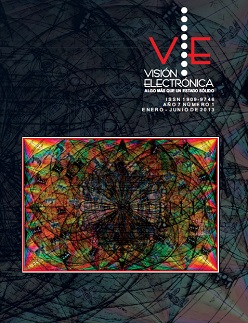DOI:
https://doi.org/10.14483/22484728.4393Publicado:
2013-09-01Número:
Vol. 7 Núm. 1 (2013)Sección:
Visión de CasoAcerca de la homogeneización y propiedades efectivas de la ecuación del calor
On homogenization and effective properties of the heat equation
Palabras clave:
Periodic composites, asymptotic homogenization, effective properties, perfect contact (en).Palabras clave:
Compuesto periódico, homogeneización asintótica, propiedades efectivas, contacto perfecto. (es).Descargas
Resumen (es)
Este es un trabajo de divulgación científica, dedicado a recorrer el problema de la conductividad térmica efectiva de un material heterogéneo bifásico tipo matriz inclusión con microestructura periódica. El material compuesto es macroscópicamente isótropo y presenta contacto perfecto en las fases. El problema se estudia en el contexto de la homogeneización periódica. Las propiedades efectivas se determinan como resultado del Método de Homogeneización Asintótica (MHA). Se utilizan conocidas herramientas de la teoría de variable compleja para la resolución del problema sobre la celda periódica. Se presentan los casos límites.
Resumen (en)
This is a work of scientific circulation intended to introduce the homogenization process from the heat equation. An example is studied for a medium made of two conducting materials, matrix and fibers. The fibers are periodically distributed and embedded within the matrix. The composite is isotropic on the macroscopic scale and perfect inter-facial contact conditions are considered. The problem is studied in the context of periodic homogenization. The effective conductivity tensor is calculated as a result of the application of the asymptotic homogenization method. The solution of the problem on the periodic cell is based on well-known tools of Complex Variable Theory. Some limit cases are also presented.
Referencias
N. Bakhvalov, G. Panasenko, “Homogenization: averaging processes in a periodic media”, Dortmund, Boston, London: Kluwer, 1989.
E. Sánchez-Palencia, “Non homogeneous media and vibration theory”, Lecture Notes in Physiscs. Berlin: Springer- Verlag, 1980.
O.A. Oleinik et al., Mathematical problems in elasticity and homogenization. Amsterdam: North-Holland, 1992.
D. Cioranescu, P. Donato, An introduction to homogenization. New York: Oxford University Press Inc., 1999.
A. Markushevich, Teoría de las Funciones Analíticas. Tomo II. Moscú: Editorial Mir, 1970.
E. I. Grigolyuk, L. A. Fil’shtinskii, Placas y membranas perforadas. Moscú: Editorial Nauka, 1970.
L. V. Kantarovich, V. I. Krilov, Approximated methods of higher analysis. 4 ed. New York: Interscience Publishers Inc.,1964.
O. Bruno, The effective conductivity of strongly heterogeneous composites. London: Proc. R. Soc. A pp. 443, 353–381, 1991.
J. Aboudi, Mechanics of Composite Materials. Amsterdam: Elsevier Science Publications B.V, 1991.
F. J. Sabina, J. Bravo, R. Guinovart, R. Rodríguez, O. C. Valdiviezo, “Overall behavior of two-dimensional periodic composites”, International Journal of Solids and Structures, vol. 39, n.º 2, pp. 483-497, 2002.
B. E. Pobedrya, Mecánica de materiales compuestos. Moscú: Universidad Estatal
de Moscú, 1984.
J. B. Keller, “A theorem on the conductivity of a composite médium”, Journal of Mathematical Physics, vol. 5, pp. 548–549, 1964.
G. López, J. Bravo, M. E. Cruz, R. Guinovart, R. Rodríguez. “Cotas variacionales para coeficientes efectivos en compuestos con contacto imperfecto”, Revista Visión Electrónica, n.º 14, 2013.
H. Berger, S. Kari, U. Gabbert, R. Rodríguez, R. Guinovart, J. A. Otero, J. Bravo. “An analytical and numerical approach for calculating effective material coefficient of piezoelectric fiber composites”, International Journal of Solids and Structures, vol. 42, pp. 5692-5714, 2005.
J. L. Gómez, J. Bravo, “Calculation of effective conductivity of 2D and 3D composite materials with anisotropic constituents and different shapes in mathematica”, Journal Computer Physics Communications, vol. 179, pp. 275-287, 2008.
Á. M. León. “Cálculo de propiedades efectivas de compuestos tridimensionales usando el método combinado de Elementos Finitos y Homogeneización Asintótica”, Tesis de Doctorado en Ciencias Matemáticas, Universidad de la Habana, Cuba, 2007.
R. Brenner. “Computational approach for composite materials with coupled constitutive Laws”, Z Angew Math Phys, vol. 61, pp. 916-927, 2010.
R. Brenner, J. Bravo Castillero. “Response of multiferroic composites inferred from a FFT-based numerical scheme”, Journal Smart Materials & Structures, vol. 19, pp. 115004, 2010.
F. Lebon, R. Rodríguez, J. C. López, J. Bravo, R. Guinovart, R. Mesejo, “A effective properties of nonlinear laminated composites with perfect adhesión”, Journal of Applied Mechanics, vol. 73, n.º1, pp. 174-178, 2006.


.png)




.jpg)





